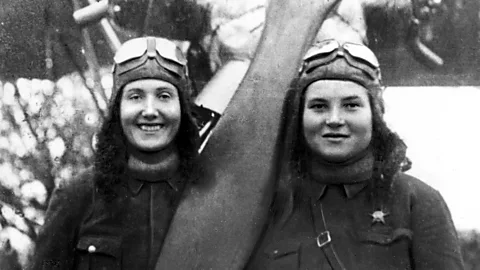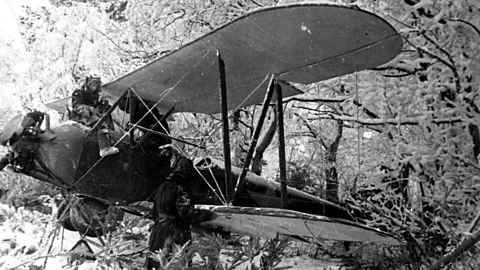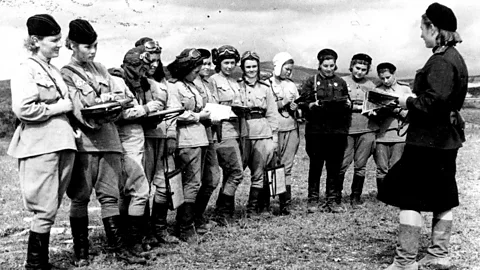'They were adrenaline junkies': The remarkable all-female flying team that helped defeat the Nazis – with wooden planes
 Andrei Linde
Andrei LindeA new episode of the BBC's History's Secret Heroes podcast focuses on the Night Witches, a group of Russian female pilots who bombed German forces under the cover of darkness.
World War Two is filled with so many extraordinary tales of heroism that not all of them have got their due. Now BBC Radio 4's History's Secret Heroes podcast, narrated by Helena Bonham Carter, has set out to celebrate these unsung war heroes. And none, arguably, are more remarkable than those covered in a new episode – a squadron of Russian female pilots who flew under the cover of night and carried out covert bombing missions.
The Germans would go on to call these women die Nacht Hexen, or the Night Witches. They were an elite band of pilots, navigators, ground crew and mechanics, whose ion for aviation and strong sense of duty led them to break gender barriers.
 Andrei Linde
Andrei LindeThose who were part of the squadron included aspiring pilots and best friends Polina Gelman and Galya Dokutovich. Both had learnt to fly when young – and when in October 1941, the order was given to famed Soviet aviator Marina Raskova to recruit women into female flying units, including the Night Witches, they jumped at the chance.
"They definitely were adrenaline junkies. They wanted to fly, they were crazy about flying," historian Lyuba Vinogradova, author of Avenging Angels: Soviet Women Snipers on the Eastern Front (1941-45), says of the two women. "And second of all they were extremely patriotic. So, they, both of them, volunteered."
Their commander Raskova was an inspiration. "She was a great celebrity of her time. Her name, her picture, her face were known all over [the country]. She was a role model. She was a woman that showed that women are perfectly capable of this kind of flying," Vinogradova says.
Turning limitations to their advantage
The Night Witches trained near the Volga River near Engels, Russia, and had to fit what would have typically been three years of training into just three months. The women found themselves both selected as navigators, rather than pilots, something which initially disappointed Dokutovich – though after she got up in the air, she became more positive about this outcome, writing: "Now I see how exciting being a navigator is! When you have done a little flying you walk around in a dream, and just want to get back up in the sky."
 Andrei Linde
Andrei LindeBecause the Soviet forces were short of aircraft, the women were issued wooden Po-2 planes, which were not fit for battle, having typically been used to spray pesticide. On top of that, they weren't given guns, radios or parachutes. As a result, they prioritised carrying bombs.
When it came to their planes, they used their limitations to their advantage: the Po-2s made hardly any noise, couldn't be tracked by radio location, and were too small to show up on infrared locators. So the women were able to fly over German territory, shut off their engines and glide – and more easily release their bombs without detection.
According to Vinogradova, the pace of their operations was relentless: "Every four minutes an aircraft would take off, bomb the target and turn back, and the other aircraft would take their place."
The Germans spread stories of the attacks across areas they occupied, depicting the Night Witches as a supernatural force. They were given the name die Nacht Hexen, or the Night Witches, because their wooden aircraft were likened to brooms, while their tactics made it feel as if they could appear and disappear without a trace.
History's Secret Heroes
In History's Secret Heroes, Helena Bonham Carter recounts untold stories of heroes from World War Two whose acts of resistance, deception and courage helped defeat fascism. Learn all about forgotten stories of survival, bravery and espionage – from the opera singers who helped dozens of Jewish people escape Nazi to the woman that Winston Churchill would go on to call his favourite spy.
If you’d like to listen to the full podcast episode on the Night Witches, window._taboola = window._taboola || []; _taboola.push({ mode: 'alternating-thumbnails-a', container: 'taboola-below-article', placement: 'Below Article', target_type: 'mix' });
